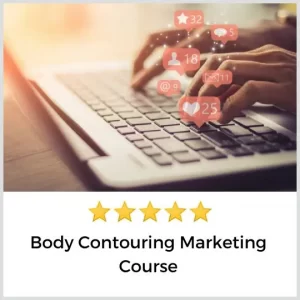Use this quick guide to define your target market so you can turn more leads into sales

Your business’ success depends on successful marketing. And what’s an absolute prerequisite to successful marketing? It’s clearly defining your target market. Unfortunately, most aesthetics businesses struggle to clearly define their target market. Instead, they try to appeal to nearly everyone. This results in their marketing campaigns being aimed at far too many of the wrong people, and then ultimately falling short of their sales goals. You can avoid these mistakes. Use this quick guide and learn how to clearly define your target market so you can turn more leads into sales.
Our Quick Guide to define your target market will show you
- What is a Target Market?
- Target Market Analysis: Take these four steps to define your target market
-
- Examine your products and services
- Study your competitors
- Apply specified criteria to segment your market
- Evaluate your findings and decisions
- Build your Target Market Persona, i.e. your ideal customer
- Stay ahead of the curve
What is a target market?
- Your target market is the specific group of people you want to reach to offer your services for their problems. This is the specific group of people who are most likely to buy from you.
- The more clearly you define this group of people, the better you can understand where and how to reach them and how to appeal to them.
- While narrowing your target, do not worry about sales volume. Even though you are targeting a narrowly defined group of people, others will also buy from you. People who are not in your target market are just not your focus when you are creating your marketing and advertising plans.
Target Market Analysis: How to define your target market
Take these four steps to define your target market
- Examine your products and services
- Study your competitors
- Apply specified criteria to segment your market
- Evaluate your findings and decisions
1) Examine your products and services
What problem(s) are you solving?
In this part of target market analysis, you are focusing on what problem(s) your service(s) are solving for your customers.
Analyze the services you’re selling so you can fully understand
(1) the value or benefits of the services and
(2) which group of consumers will get value or benefit from your services.
Notice we didn’t say features of your services?
There’s a distinction between the features of your services and the benefits of your services.
- Features are what your services do or how they work.
- Benefits or value are the positive results delivered by your services.
Features vs Benefits example
You can talk all day about ‘cellulite reduction’ and get very few leads. But it’ll be a different story if you talk about ‘feeling great in shorts again with smooth thighs.’
2) Study your competitors
You’ll need to perform market research in this part of the market analysis process.
Take your top 3-5 competitors in your market and perform an analysis to answer these questions
- What is their USP or brand?
- What is their messaging?
- Who are they targeting?
- What is their marketing strategy?
- What is their pricing?
And…
- Study their advertisements
- Evaluate the services they are promoting
Your research may reveal that their defined target market is the same or similar to how you define your target market.
Make sure…
͢➤Your USP or brand is unique
͢➤You have differentiators to set your business apart (& above) the competition
Market (competitor) research is an integral part of growing a successful business.
Not sure how to perform market research?
Get step-by-step instructions in our online course
3) Apply specified criteria to segment your market
Use this set of criteria to define your target market in as much detail as possible.
- Age
- Gender
- Income
- Working or stay at home
- Lifestyle, i.e gym rat, party animal, social butterfly, busy mom, etc
- Interests
- What really matters to her, i.e. social causes, she loves dogs, she lives for time on the beach, etc.
- The emotional reasons behind wanting to solve her problems with your services
4) Evaluate your findings and decisions
Once you’ve decided how you will define your target market, put it to the test.
Answer these questions.
- Are there enough people who fit in your clearly defined target market?
- Do you have a full understanding of what drives your target market to make buying decisions, to make the decisions to buy your services?
- How much purchasing power does your target market have?
- Can your target market afford your services?
- Will you be able to effectively reach your target market with your marketing messaging?
Build your Target Market Persona
A target market persona is also referred to as a customer avatar or an ideal customer profile.
Your target market persona is a personalization of your ideal customer and should include key information.
- An age range and gender
- Her personality
- The type of life she lives
- Her job or career
- Her salary range
- What she likes to do in her spare time
- What she is passionate about
- Her values
Include the problems she struggles with and how your business and services solve her problems
- What are her pain points and how has she tried to solve them in the past
Include the problems your services would solve for her
- Benefits your services would provide for her
- Why she would buy from you
Buyer Persona Example
Sheila is a busy working woman, aged 35-55, who has devoted her life to caring for others (kids, husband, parents) and is ready to dedicate some time to herself. She still works and has some discretionary income. Her kids are on their own. She feels like she has neglected herself and feels bad about herself because of it. She wants to feel better about her body and gain confidence. She knows she’s not going to look like an eighteen year old in a bikini, but she wants to look better in clothes and feel comfortable in a swimsuit. She wants to feel attractive, comfortable, and feel more confident. She wants to feel that she is doing it because she is worth it. It’s her time now. She is ready to feel better and wants body contouring treatments to help her do so.
Stay ahead of the curve
- You must define your target market for your marketing efforts to succeed and to ensure business growth and long term success.
- Once you define your target market, it’s important to regularly reassess as
- Your market
- Your competitors and
- Your services
as each of these factors will continue to evolve.
- Your business must have a plan in place to review and adjust (when necessary) so your business will remain relevant, profitable and long-lasting.
We understand you are a business expert, not a marketing expert!!
We show you how to create a highly converting marketing plan in our online Marketing Body Contouring course, in which you’ll
- Learn how to set your business apart and outperform the competition.
- Learn about the tips, tools, and props that demonstrate your expertise and lead to sales.
- Learn what body contouring content you must include in your website, and discover optional/preferred elements to make your website achieve maximum performance.
- Learn how to determine and define your competitive advantage and your unique niche so that prospects choose you and your body contouring business.
PLUS! You’ll learn how to outperform your competitors on your social media accounts!
AND! You’ll learn how to avoid costly marketing and advertising mistakes!

